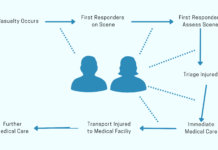
Experts estimate that up to 50 percent of medications that physicians prescribe to their patients don’t end up being taken as directed. At least 20 percent of the prescriptions aren’t even filled.
Health policy insiders call this phenomenon—patients not following their doctor’s orders—non-adherence, and it can be very costly. Non-adherence used to be called “noncompliance,” and that term is still heard occasionally but implies a willful refusal to do what they should do, and health care providers are increasingly recognizing that outside factors are often to blame. A bus driver may not be able to drink eight glasses of water every day because she doesn’t have access to regular bathroom breaks. A college student might not be able to follow a low-fat, low-salt diet eating in the school dining hall.
One of the aspects of non-adherence is when the patient doesn’t take prescribed drugs according to the provider’s instructions. This non-adherence leads to hospitalizations when chronic conditions flare up, and these hospitalizations cost the health care system between $100 billion and $289 billion each year. Failure to follow prescriptions causes some 125,000 deaths a year and up to 10 percent of all hospitalizations.
Medication non-adherence can have a number of causes: patients don’t like the side effects, or their lack of symptoms makes them think they don’t need the drugs anymore. People find it difficult to take a drug—such as those to prevent the reoccurrence of breast cancer—for years on end when they don’t have any proof that they’re working. Some people simply forget. While all of these are factors, there is one big reason people don’t take their medications: cost.
Pharmacists—along with nurse practitioners and social workers—are vital members of the health care team and may be better able to help patients navigate these various assistance programs. Pharmacists are in a perfect position to know whether patients have been taking their pills regularly, and they can offer assistance when they see someone hasn’t been filling their prescriptions.
“There are a number of competing demands,” Sharkey said. Rent is due, there are utilities to be paid to keep the lights on, and food so the kids don’t go hungry—all of these other obligations can get in the way of being able to buy medications. “Any intervention has to take into account the larger context.”
Indeed, research seems to confirm that low income patients struggle more than average with medication adherence. Some of the problem may be pharmacy access: Transportation issues often keep customers without the use of a car from getting to good pharmacies.
“What we see in South Texas is that resources ebb and flow,” said Sharkey, who is also the founding director of the Program for Research and Outreach-Engagement on Nutrition and Health Disparities Solutions. “Some months people can buy medications, and other months other bills need to be paid or they haven’t gotten much work, and medications fall by the wayside.” Even if they have medications in their cabinets, patients may be less likely to take them on schedule for fear of being unable to afford refills later. The Texas A&M Health Science Center Coastal Bend Health Education Center assists uninsured and underinsured South Texas residents with their medication, but there is always more that can be done.
“People will alternate days or cut pills in half—anything to make the drugs last longer,” Sharkey said. “We need to put better programs in place so they don’t need to.”
This article focuses on the cost aspect of medication non-adherence which is related to low health insurance literacy. The author discusses how pharmacists can serve as a vital role in explaining health insurance coverage and alternatives for patients who have cost concerns. Another important takeaway is pharmacy access. Transportation and other factors may make it hard for patients to access a pharmacy. For example, if they are working during the pharmacy hours and are unable to pickup their prescription. Some of the delivery options have tried to combat this issue, however there are literacy concerns within signing up for the delivery options as well. Overall, receiving and understanding medication is a very complicated process that is made up of multiple steps. Creating a better transfer of information and communication between all those involved may yield better medication adherence.




This article is very insightful as it lists reasons why cost causes people to put their medication on the back burner. The sad fact is that you can go without pills, you can’t go without food. Good find.